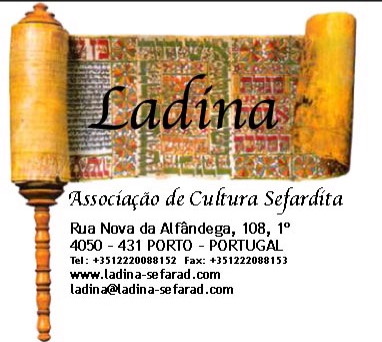 Ponte de Lima, photo by Rafael de Gilberto
Ponte de Lima, photo by Rafael de Gilberto“Cruciforme” is the name given by Portuguese researchers to medieval stone engravings resembling Christian crosses usually found on doorposts in the historic centres of many cities in Portugal in or near the former sites of “Judiarias" (Jewish neighbourhoods) before the edict of expulsion of 1496.
Unlike the Spanish edict, the Portuguese expulsion was not carried out; instead Portuguese Jews were baptized en masse, perhaps only 40 were permitted to leave according to noted historian Elias Lipiner. After the forced baptism, Judiaria walls were torn down and Jews, thereafter known as New Christians moved away, but many remained as King Manuel promised not to inquire into private religious practices for 20 years, a period which was extended following the Lisbon massacre of thousands of New Christians in 1506.
The Portuguese Inquisition did not get underway until the 1540's, unlike neighbouring Spain which established the Inquisition in 1478. Accordingly, a unique culture of secret Judaism developed in Portugal with tacit royal consent, which is commonly described as Marranism by such distinguished authors as Cecil Roth (The History of the Marranos), Yosef Yerushalmi (From Spanish Court to Italian Ghetto), and Yirmiyahu Yovel (The Marrano, Split Idendity).
The foremost archeologist in Portugal studying these cruciforms is Carmen Balesteros of CIDEHUS, the Interdisciplinary Centre of History, Culture and Society, of the university of Evora. As she notes in her study of Guarda (Marcas Mágico-Religiosas no Centro Historico, Guarda, 2007, 2nd ed; p. 18-19) cruciforms are also found outside the Judiarias in Trancoso, Covilhã, Castelo de Vide, and Guarda. Many cities along the Spanish/Portuguese border where thousands of Jews settled following the 1492 Spanish expulsion, contain cruciforms. On the Spanish side, Balesteros has studied cruciforms in Valencia de Alcantara, Trujillo, and Coria. In her study of Guarda, she and her team identified and documented over 80 cruciforms.
There is no written documentary evidence to explain the form or existence of the cruciforms. Balesteros refers to the historic significance of the Christian cross and calls for the contextualization of the meaning of cruciforms; the significance of an engraving of an altered form of a Christian cross on the doorway of a home in a Judiaria should not be interpreted the same way as a normative cross on a Roman Catholic religious building or a public building.
Balesteros suggests that a concentration of cruciforms in a Judiaria, such as Guarda, may be understood in two ways, either as evidence of the necessity of Jews following their forced baptism to publicly demonstrate their allegiance to the only religion permitted by the state, Roman Catholicism, even if they continued to secretly observe Judaism, or a genuine expression of relious belief in difficult times.
Was an engraved cruciform on a doorpost a public declaration of the faith of the occupants and thus used as protection from the Inquistion? Much more study is needed in this fascinating area.
 Guarda, photo by Rafael de Gilberto
Guarda, photo by Rafael de Gilberto



